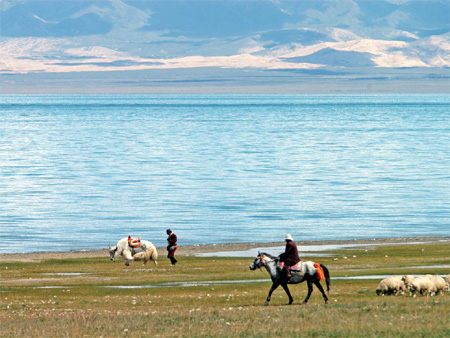
Qinghai Lake is China's largest lake and the most popular tourist spot in the western province. [Photo/China Daily]
If a visitor wants to escape China's crowds, scenic Qinghai is the place to go
China's most famous poet, Li Bai, wrote that the "Yellow River spilled out of heaven and its tangling strands rolled all the way into the sea". The "heaven" he was referring to is Qinghai, the source of the Yangtze, Yellow and Mekong rivers, and one of China's outback tourist gems.
In a nation of 1.37 billion people, Qinghai is one of the most sparsely populated parts of the world with just 5 million people living in an area the size of France. China's fourth largest province (720,000 sq km) borders Tibet and Xinjiang, and is a mysterious land of diverse cultures and customs.
The province's breathtaking landscape varies from the sapphire-colored lakes and vast grasslands to 6km-high snow-capped mountains and desert dunes.
There are numerous lakes spread across Qinghai and local legends paint a colorful picture of how they originated.
One story tells of Tang dynasty Princess Wencheng, who had to marry the king of Tibet as part of a peace agreement. When resting in Qinghai, she turned to her homeland and burst into tears, which filled the lake.
Qinghai has a long cultural and religious history with many Tibetan Buddhist pagodas and Muslim mosques scattered around the province.
The Silk Road, known as the bridge connecting East and West cultures, ran through Qinghai, and as a result the province became a key location for cultural exchanges.
One of Qinghai's most famous items of local culture is huar, a kind of folk song that is very popular among native people and has a history of more than 400 years.
Huar has a second name, shaonian, referring to 'boys singing' and it has been named in the UNESCO world list of intangible cultural heritages.
